Working with StrongFirst and Brett Jones at our first joint event — Foundational Strength at Phil Scarito’s DV8Fitness in King of Prussia, Pennsylvania — was a great experience. It was exciting to introduce people to the transition from Functional Movement Screening to corrective exercises and the many ways the kettlebell can be vital to the process.
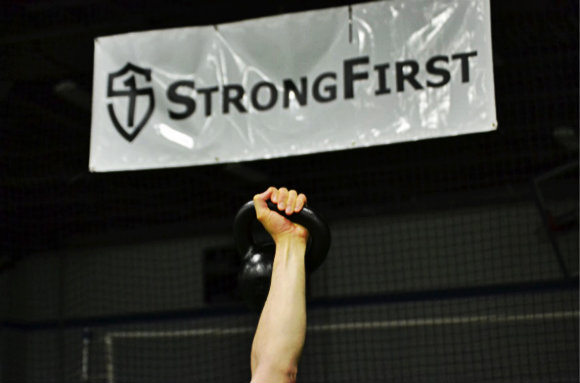 The Beauty of the Get-up
The Beauty of the Get-up
The get-up is one of the few full-body movements we perform with a kettlebell. It honors mobility and stability at its finest. It also fits the criteria of our movement screening because it looks at the left and right side of functional movement individually — you are going to do a right get-up and you are going to do a left get-up. They should complement each other. You should not be much better on one side than another because it is not about right-hand dominance or strength.
It’s all mobility and stability. It is not pressing. It is not squatting. It is basically moving in all three planes with respectable proprioception, mobility, and stability.
Putting a Speed Bump in the Get-up
By imposing a “speed bump” in the get-up, we take an already slow movement and make you slow it down even more. A speed bump makes you pay attention. We impose that speed bump to send you to a corrective strategy and some pretty neat stretching that will basically enhance the get-up.
I appreciate Mark Cheng bringing the move that became the speed bump to Brett Jones and me while we were working on Kettlebells from the Ground Up. In the very center of the get-up, you have a choice of hovering or you can do a plank up on the elbow. That plank is basically one leg bent. Imagine the right kettlebell overhead. The right leg is bent. The left leg is out straight. You lift up your body and basically demonstrate full hip extension.
We thought, “You know what, this little three-point bridge is a great way to get people who are using the get-up as corrective strategy to first see it as a screen.”
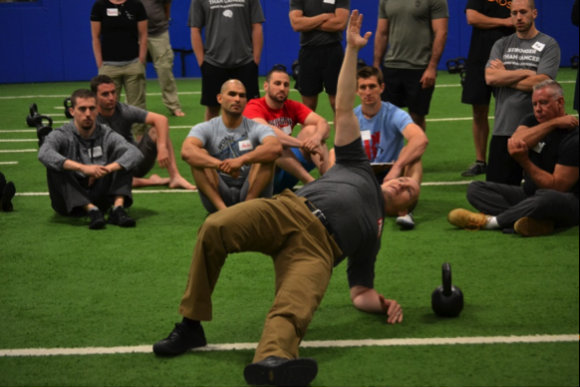 The get-up has to show you a problem before you have the insight to correct that problem. By imposing this extra amount of hip extension, we slowed you down because there are only a few places where you really have to have a lot of hip extension in the get-up.
The get-up has to show you a problem before you have the insight to correct that problem. By imposing this extra amount of hip extension, we slowed you down because there are only a few places where you really have to have a lot of hip extension in the get-up.
The reason we like bridging and put it into a lot of athletic development routines is because it is one of the few challenges where we get to put the glute against the hip flexor and your hip extends as opposed to your low back. But many athletes, the quad-dominant athlete or the person who is over trained in the hip flexor, will gave us back extension instead of hip extension.
The Purpose of the Hip Extension
The purpose and nature of coaching is to hold you up against your weakest links, to expose you to your weakness, and to allow you to rise to a challenge so your opponent or life does not find your weakness.
When we took on this little study with the get-up, we agreed on all six positions with everybody else. We modified one of the positions. It has created some controversy and we had a lot of comments on that three-point bridge. We maintained its value as a corrective strategy — as a speed bump to increase your awareness that may be you cannot clear your hips as good as you thought.
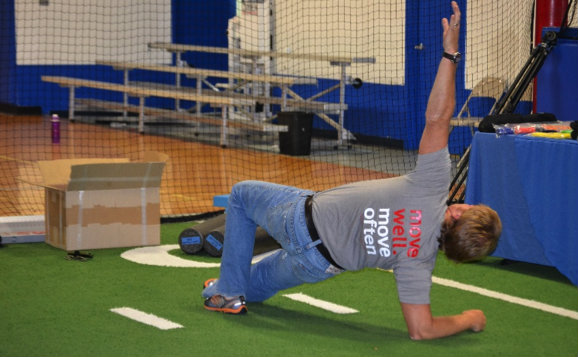 Instead of doing a bunch of hip lifts or single-leg bridges to reduce the dynamic activity of your psoas and hip extension, do a get-up this way. If it catches you at this stage, then own the stage. The get-up is not about seeing how quick you can get up and with how much weight. It is about honoring each stage of the exercise.
Instead of doing a bunch of hip lifts or single-leg bridges to reduce the dynamic activity of your psoas and hip extension, do a get-up this way. If it catches you at this stage, then own the stage. The get-up is not about seeing how quick you can get up and with how much weight. It is about honoring each stage of the exercise.
A Speed Bump Is on the Road to Somewhere
Once you are competent with the get-up, once you feel like these corrective strategies have helped you, once you feel like you are moving symmetrically on the left and right and the basic little speed bump get-up we showed you does not present difficulty, do whatever get-up you want — and start thinking about other speed bumps.
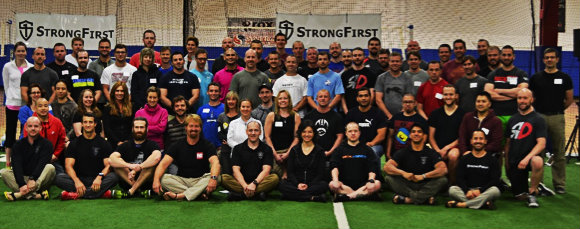
Highlights:
- Calisthenics began as beautiful moves with weighted implements
- Bridges are one of the few challenges where the glute acts against the hip flexor
- The get-up begins in a three-point bridge, an intentional speed bump
- The get-up must be screen before it is a strategy
- It must show you a problem before you have the insight to correct it
- The first populations that used the get-up generally moved better than people today
- The get-up is one of the few full-body movements we do with a kettlebell
- The “speed bump” is imposed to send you into a corrective strategy
- Focus is not about seeing how quickly someone can get up and with how much weight
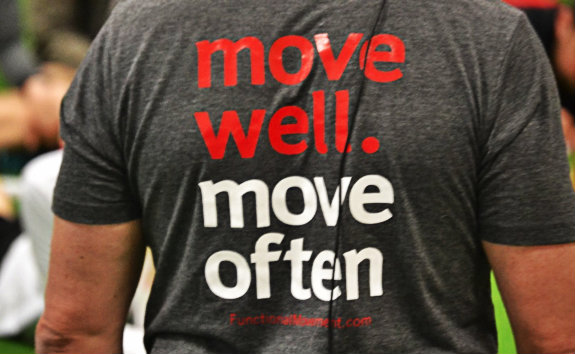
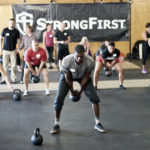

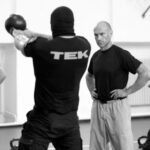
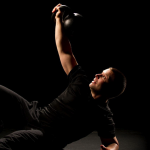

Saki,
Thanks for your thoughtful reply. I am a beginner with kb’s, but have a background in gymnastics, wrestling, weightlifting, distance running, and martial arts. And for a few years practiced classical guitar. I’m familiar with having to do movements slowly and deliberately while learning them but eventually the pathways are laid down and the transitions are smooth. I hope for the same with the TGU. I don’t think I would get as much enjoyment from the movements if they were always done in a halting, start stop manner. I’m signed up for the SF kettlebell course in August, perhaps I will understand better after the class. I’m very much looking forward to it.
I did have a good weekend, hiked about 5 miles with my wife early this morning. I hope you had a great one as well.
BTW, I did find a couple of papers by Dr. Thelen. Interesting, but the ones I read the subject was either early development (infants) or decline of movement accuracy in the elderly. I didn’t find anything related to sport skills. Thanks again for the reference, I’ll keep looking.
If you truly own a movement couldn’t you do it smoothly and unbroken from beginning to end? Isn’t that the ultimate goal for the TGU; smooth, unbroken, gracefully and quickly?
Mike,
I agree with your comment, except the part “finishing up TGU quickly”.
If you read the articles from Pavel, Cook, Brett, or any other awesome sports med professionals and strength conditioning, you can see the strength, not “power”, comes from controlled movements.
If you have an access, then I recommend to read the articles regarding to Speed- Accuracy Trade off theory studied by Dr. Thelen, which is amazing work on human development. Basically, it says the quicker we move, the more noise on our neuromuscular output you have. So, the quicker you move, the more mistakes you can have in the movement wise. This would certainly lead us to some kind of compensation, which leads us to unwanted injuries.
Also, if we can move gracefully smoothly in the unbroken/ controlled manner, we look quick too, as you can imagine.
I just hope my comment can help your question to be a little clear. Have a good weekend.